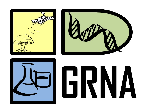Banca de DEFESA: DANNA MORAES ALVES
Uma banca de DEFESA de MESTRADO foi cadastrada pelo programa.DISCENTE : DANNA MORAES ALVES
DATA : 30/04/2020
HORA: 14:30
LOCAL: https://zoom.us/j/98644311885
TÍTULO:
...
PALAVRAS-CHAVES:
Palaemonidade, 28S, Molecular identification.
PÁGINAS: 51
GRANDE ÁREA: Outra
ÁREA: Ciências Ambientais
RESUMO:
Carida shrimp make up a very diverse group within decapod crustaceans. Currently, 39 families are recognized, with emphasis on the family Palaemonidae. In South America, palemonid shrimp are the most specious family with wide distribution, and in the Brazilian Amazon the presence of 33 species is registered, with emphasis on the genera Macrobrachium, Palaemon and Pseudopalaemon with the largest number of species, respectively. The literature for morphological and taxonomic analysis of palaemonids is updated and well structured, however, this identification methodology is, in certain cases, complex due to its great interspecific morphological conservatism associated with considerable intraspecific morphological variation. The application of molecular techniques contributes to the advancement of studies on the delimitation of species and phylogenetic relationships of palemonid shrimp. In the present work we aim to evaluate the applicability of a 28S ribosomal DNA (rDNA) region as a tool for molecular identification of shrimp in the Palaemonidae family. The composition of the database was through the collection of shrimp in the vicinity of the municipality of Santarém, in the west of the State of Pará, where the confluence of the Amazon River and the Tapajós River is located, with seven collection points, and the incorporation of samples specimens deposited in three museums in the northern region. To amplify the 28S ribosomal region (~ 540 bp), the primer 28S A and 28S B were used. The sequences were organized as follows: (1) a database with 47 museum sequences and a phylogenetic tree was built using Neighbor Joining method (NJ), based on simple genetic distance (p); (2) database with 15 museum sequences and 27 streams of haplotype samples from streams and three species delimitation methods were applied: ABGD, GMYC and PTP. With the clusters strongly supported, the methodology used allowed an analysis by means of the correspondence between the positioning of the sequences in different delimitation methods, where 20 species were identified by the ABGD and GMYC approach and 30 species by the PTP method, we infer the taxonomic identification of 16 haplotypes and a museum sample, we corrected the identification of six museum samples, and 11 haplotypes were identified only at the gender level. The results of the molecular data confirm the applicability of the nuclear 28S gene as a molecular marker for species identification.
MEMBROS DA BANCA:
Presidente - 1987988 - GABRIEL IKETANI COELHO
Externa ao Programa - 3040646 - IVANA BARBOSA VENEZA
Externo ao Programa - 2162157 - LUCIANO JENSEN VAZ
Interna - 1995892 - SIRIA LISANDRA DE BARCELOS RIBEIRO




